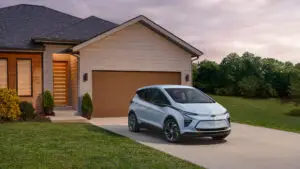A new study by Honk Technologies has found that motorists are fueling up far less frequently than they were before COVID-19 lockdowns happened. How drastic the drop is, however, may surprise you.
According to Agero, beginning March 17, when the country’s first stay at home order went into effect, daily average traffic volume began to fall. Currently, traffic has rebounded and continues to climb with figures nearing the volume of early March, growing at a weekly rate over four times faster than the same period in 2019.
Traffic in New York City is down 18 percent compared to forecasted amounts, according to Agero.
Photo by Getty Images
“The pandemic has certainly disrupted traditional traffic patterns,” says Beth Davidson, Agero’s chief marketing officer. “The typical rush hour commute has disappeared, errands are no longer relegated to Saturday morning, and road trips are becoming the new plane ride. But as states continue to ease stay at home orders, we’re seeing breakdown event volumes rapidly return to near-normal levels as people begin to use their vehicles again. We believe this could be the start of far higher traffic volumes than we are used to seeing.”
Easter seem to have been the turning point for most areas, according to Agero. Since then, average roadside assistance events have shown a greater than 30 percent increase through June 10th.
Because Americans are driving less, they’re also fueling up less. An online survey of 719 motorists by Honk Technologies found that 56 percent of respondents were willing up less than once a week prior to the pandemic. Eleven percent filled up once a moth or less.
Currently, 25 percent of survey respondents say that they’re filling up at least once per week. Forty-five percent hit the pumps once per month or less.
Additionally, the survey revealed that beyond commuting, few are making trips other than for what is absolutely necessary. This makes sense as many extracurricular actives have been cancelled and dining establishments have closed or are only open under limited conditions. School runs have also ceased.
When asked what destinations they had driven to in the prior seven days, 83 percent said they had driven to a grocery store, pharmacy or some other store for necessary supplies. Just 17 percent had gone shopping, 21 percent to outdoor recreation activities, 25 percent to a restaurant or cafe, 31 percent to visit family or friends and 32 percent to go to work. Just four percent did not go out at all.








